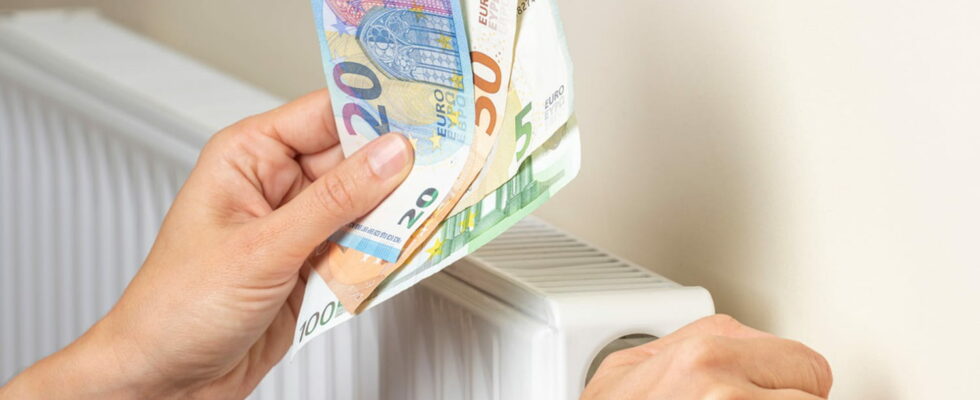Hard blow for assistance with the installation of connected thermostats in homes! The Government is preparing to put an end to it, while the system will soon become compulsory in all housing.
The connected thermostat is all the rage at the moment! This tool, which is directly connected to the heating, adjusts itself according to the ambient temperature, the time of day or its setting, room by room. You can even control the device remotely via your smartphone, and therefore adjust the temperature of the home while being outside. Energy consumption is thus closer to actual needs.
In order to combat the overconsumption of electricity caused by heating homes, the Government has decided that all households must be equipped with a programmable regulation device by 1er January 2027, as stipulated Decree No. 2023-444 published in the Official Journal on June 7, 2023 – it is therefore not necessarily a connected thermostat, but a device having at least the basic temperature programming functions.
However, this type of equipment is not cheap. Also, to encourage French households to equip themselves, the Ministry of Ecological Transition has launched the “Help for connected heating management room by room” system (see our article). This is financial assistance that you can benefit from by having a thermostat or thermostatic head connected to your radiators installed. It ranges between €260 and €624 depending on the surface area and the type of heating chosen. But the Government plans to put an end to this very practical aid.
Connected thermostat: installation assistance removed
As a reminder, the prices of so-called “classic” connected thermostats are between 100 and 300 euros. However, the most sophisticated models can sell for between 600 and 1,500 euros. A cost to which must be added that of the installation. Because, yes, the latter does not happen alone and generally costs 200 euros. Suffice it to say that financial assistance from the Government is more than welcome!
However, this device was supposed to be temporary. Indeed, it was initially scheduled to last until December 31, 2024. If it retained a chance of being extended beyond this deadline, this will ultimately not be the case. According to information from our colleagues at The Informeda draft decree submitted to the Higher Energy Council provides for the imminent end of the system, and the Government plans to be expeditious, by eliminating the aid even before the end of the year.
The reason? In some cases, the level of subsidy would be equivalent to, or even higher than, the actual cost of purchasing and installing the devices. In addition, numerous cases of fraud and embezzlement of aid are strongly suspected. Stricter controls will therefore be put in place to combat these abuses for future devices of this type.
Connected thermostat: what solutions to save money?
But if the scheduled end of this financial assistance is bad news for individuals, connected thermostats will fortunately continue to benefit from other support, that of energy savings certificates (EEC), the amount of which is decided by each supplier – so do not hesitate to bring in the competition.
For those who heat with electricity, which is the case for 10 million French households, it is however possible to equip themselves with a thermostat free of charge, installation included, and without a subscription. This is what Voltalis, the main player in France, or even Tiko, a Swiss company that has become a subsidiary of Engie, offer, for example.
They equip each radiator with a small module, equipped with a temperature sensor, plus a communication module in the housing, connected to 4G. Everything then allows you to monitor your heating consumption in real time from a mobile application, but also to control your radiators remotely, room by room.
Free connected thermostat: be careful, there is a reward
But what are the sources of financing for these free installations? Firstly, the “Coup de Pouce” bonus, which is deducted from the invoice and can be collected directly by the installer. Its deletion will therefore result in additional costs. For homes heated with electricity, companies also monetize “consumption reduction”.
Indeed, since electricity cannot be stored on a large scale, unlike gas, it is necessary to constantly adjust the supply (the production of power plants, wind turbines, etc.) to the demand of businesses and individuals. To act on this last point, it is enough to reduce the demand for electricity. People who have accepted the installation of these installations therefore consent – sometimes without knowing it – to the fact that their heating can be lowered from time to time by the company which intervened or by one of its partners, without being notified. When it anticipates a peak in electricity consumption, the network manager can then ask Voltalis and Tiko to mobilize their demand response capacities. And yes, if it’s free, we’re the product!
This approach poses some problems. Firstly, its disguised commercial side, since this allows the company to get a foothold with the customer, to get in touch with them in order to then present other products, such as photovoltaics or insulation. Then, the bonuses paid by RTE to demand response operators are financed from taxes paid by all households, the CSPE, as noted UFC-Que Choisir. Canceling as such does not actually save money, it is just a postponement of consumption.
Households are therefore not the big winners, but companies such as Voltalis, which are paid “by selling the consumption avoided during peak periods, that is to say at the highest price. And the other big winner from shedding is the electricity network manager, ERDF. It thus avoids heavy investments to upgrade the network”already explained the association in 2015 At Voltalis, however, we maintain that erasure allows energy savings of around 8%, which, coupled with radiator control, allows up to 15%. At least this allows you to comply with the law!
